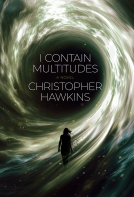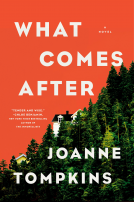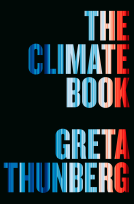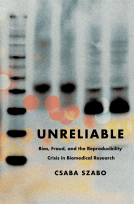
What We See In The Smoke
by Ben Berman Ghan
This title was previously available on NetGalley and is now archived.
Send NetGalley books directly to your Kindle or Kindle app
1
To read on a Kindle or Kindle app, please add kindle@netgalley.com as an approved email address to receive files in your Amazon account. Click here for step-by-step instructions.
2
Also find your Kindle email address within your Amazon account, and enter it here.
Pub Date May 30 2019 | Archive Date Jun 16 2019
Talking about this book? Use #WhatWeSeeInTheSmokeCrowsnestBooks #NetGalley. More hashtag tips!
Description
The world we know is coming to an end. How will we connect in the strange and frightening one that’s coming to take its place?
What We See in the Smoke twists the genres of realism and science fiction to tell the future history of Toronto, a story that stretches from this millennium to the next. The novel leaps across the boundaries of time and space, as present and future Torontonians search for meaning, connection, and love in a city that grows more beautiful and frightening as its familiar characteristics fade away.
A musician is caught in an endless time loop unable to reach those he loves, two broke and desperate men plan a heist of a cannibal auction, a detective with sinister proclivities hunts for a criminal who is stealing dreams, and a college student searches for his brother in the hours before a nuclear war. All of these and more lead to a world where only rich cyborgs or the homeless remain, where teleportation has made crime impossible, and where city-sized spaceships are maintained by strange creatures while planet Earth itself is left behind.
Ben Berman Ghan spins a web of these lives and many more, blending the familiar with the surreal until both give way to the story of ordinary people in extraordinary times.
Advance Praise
Benjamin Ghan writes with a glorious imagination and an outsized heart. In stories that are tender, melancholy, and outrageous by turns, he serves up feverish visions as though having looked into our futures and reached into our dreams. -- Robert McGill, author of Once We Had a Country
Marketing Plan
- Author tour of Toronto and Ontario bookstores
-Media campaign for major national and international media.
- National literary festival applications
- A social media campaign including Goodreads, Facebook, and Twitter
Available Editions
| EDITION | Paperback |
| ISBN | 9780921332688 |
| PRICE | $16.95 (USD) |
Featured Reviews
 Paul V, Reviewer
Paul V, Reviewer
A pretty unique approach -- a series of inter-connected but stand-alone stories that form a story that spans 1000 years. Kudos to the author for the execution of a creative idea. For expecting sci-fi, that doesn't kick-in until a few chapters in so be patient. Recommended for something different.
I really appreciate the complimentary copy for review!!
We have many questions about the future, such as whether artificial intelligence will take over, if we will be able to teleport one day, whether there will be enough jobs in the future, and whether another nuclear war will destroy our planet. Ben Nerman Ghan imagines a world where these scenarios have come true.
What we see in the smoke is a collection of short stories set in 2016-3036. Most are based on Toronto, Canada, while some follow the stories of people who originated from there. Each story was a mystery in itself - I was hooked because I wanted to know who was narrating it and what role did they play in the grand scheme of things. With elements from iRobot, and narration from a variety of perspectives (I found the one from the perspective of a building fascinating), each story is about identity and adjusting with reality. In some, the narrators themselves are struggling to understand who they are. In others, they are trying to understand what the world has become.
The stories touch on issues such as cannibalism, human organ trafficking, acceptance of androids as being alive, in a personal way, looking at how and why humanity will get there. Also taking a deeper dive into what an artificial intelligence might think like one day, struggling with its own identity and in some cases, to make sure that the humans it loves survive.
Ben created a world that I wanted to go back to, based on all the different narratives, piece together what really happened that all these events transpired. It is unclear why the musician was in an endless loop, and how with a click, humans were able to teleport and why everyone had to get implants… but those are the very elements of science fiction and realism.
My favourite stories were Closing Time and The war with Space. Ben says in Closing time,"The future can be as much as myth as the past." I really enjoyed this book because it is the only one I have ever read that tried to answer the big questions we have around data, automation and computers. Ben did this by showing the reader pieces of numerous lives that were affected by telling stories with unique voices. My tasks does not end here because I still want to go back and create the big picture I read about in fragments scattered over more than a century.
I am thankful for the free advanced reader copy from the publisher and author through NetGalley. If you like mysteries and science fiction, and are curious to know what the world might look like in the coming years, I highly recommend picking this book. Be patient though, because like all short stories, it will take some adjusting to the settings and the beings.
The book is an ambitious and beautifully wrought collection of interlinked short stories. I enjoyed all of them, and even the few I found rather humdrum were by no means terrible.
The writing is clear, concise, but often lyrical. The tone was bleak throughout, which can be tiring in a short story collection, but I didn’t find it so in this volume as the stories were interconnected.
The characters were well-defined in each story – I understood their motivations and struggles. I enjoyed the non-binary focus as well as the equal page-time for men and women. The intersectionality of the collection was wonderful – there is a character with deafness, many people of colour, and a range of sexualities.
My one major issue was with the preface. I read the first paragraph and then skipped it. I can understand a preface or a forward in a classic novel or a translation, but in a new work it is a major turn off for me. It’s essentially a spoiler – I don’t want the work explained to me! I want to experience and figure it out on my own. Frankly, if you feel you must explain to your readers your formatting intentions, maybe you need to revisit it.
This ties to another reason I can’t give this book five stars – at times it felt like it was trying too hard to be somewhere between a short story collection and a novel. The links between stories were sometimes too heavy-handed or felt forced (Shakespeare, “it was enough”, colt .45s). Sometimes they were subtle and I enjoyed picking up on them (missing thumbs, aching leg wounds), but other times it was distracting.
I did enjoy the attempt at having all the stories exist within the same universe/timeline, but it got a little convoluted. There are too many existential themes (AIs, clones, death, suicide), social themes (human rights for robots, cloning for food purposes, gender, implants, government control), and then sci-fi science elements (teleportation, colony ships, AIs, clones, dream capturing). There’s just too much. I felt overwhelmed by the new concepts in each story, especially in a collection that’s supposed to be the same story. It made me wish each section only had 3 long stories with one single theme from each aspect.
Overall, it’s a beautiful collection. You could read each story as its own self-contained tale, but they also work as a linked set. Those from Toronto will enjoy the references to the city.
 Sarah M, Media/Journalist
Sarah M, Media/Journalist
Toronto Star, June 26, 2019
https://www.thestar.com/entertainment/books/2019/06/26/a-canada-day-reading-list-from-our-indie-presses.html
What We See in the Smoke, Ben Berman Ghan
Author Ben Berman Ghan steps back in his preface to tell us what to expect in the pages that follow. He calls it a “fix-up novel,” originally 17 unconnected short stories that he reworked as a single speculative narrative, the only constant being the central character, Toronto, its immediate past and its far-flung future (specifically, 2016 to 3036). But this kind of meta literature defies space and time, and it’s perfectly OK to read these story-chapters in whatever order one fancies.
Ben Berman Ghan – What We See in the Smoke
They say you shouldn't judge a book by its cover, and I guess they're right, even if covers frequently are following an optical/design code indicating what's inside. Because we Do choose books by their covers; or at least I do. So, this is one I picked up for its cover, because it put me in the mental frame of things I'd read in the past, and loved.
And you know what? I greatly enjoyed that one, too, after a few hard-to love initial pages.
Ben Berman Ghan is a Canadian author, editor, and MA student; with now 2 novels (and next year a non-fiction book) plus loads of short fiction and non-fiction articles to his name. His first novel, Wychman Road, is out of print, and next year's release is called Bruce Meyer: Essays on his Work.
What We See in the Smoke starts in realism with a social undertone, and heads from there into the future – all parts set in Toronto, even if you wouldn't recognise it at times if it didn't declare itself to be so!
But to start at the beginning – this is not a straight up story, but what I normally would term a patchwork novel, ie a collection of short stories which, whilst independent in actual topic and story arc, tell a larger story in combination.
He himself terms the book a fix-up novel, as he re-wrote the individual pieces, previously unconnected stories, to refer to each other and tie them together into some kind of single narrative (I don't think they would have created a larger picture otherwise). But terminology aside, this is a collection of short stories, in 3 larger parts of 5 or 6 chapters/stories each: These Memories of Us (2016-2026), These Violent Machines (2040-2280), and An Uncertain and Distant World (2280-3036). But if this sounds all very Accelerando to you then I have to tell you that the book at hand is a much looser collection of impressions.
But, before all that, there is a superfluous preface where the author explains the book, his approach, the genres involved as he sees them, the meaning of the various pieces, etc.
And I have to tell you (and him!): Just don't.
Some of this might have made an ok post-script, and some is entirely not needed.
Skip it, I would recommend.
Then we get long acknowledgments, and a Pratchett quote concerning memory, and the changeability of the world, to send us on our way into the actual stories.
This continues – every story start with a quote, either from a classic, both SF and literary (he studies English Literatures of Modernity, which might have something to do with this).
But let me give you a taste of what's in the stories, just for the first 5.
Chapter 1: Stranger Bedfellows
This follows a gay bookseller, in an old market which is earmarked to be re-developed/gentrified, and who refuses to sell up. We witness an escalating series of threads, attacks, intimidations, interspersed with relationships, inner life, and some fascinating non-sequiturs. Somewhat claustrophobic, and inwards-facing.
Chapter 2: Planet 58
Here the central protagonist is a cycle courier with Mental Health issues and a Shakespeare fixation (and a theory that of 58 planets, each of which have their own version of Shakespeare's plays). This is bleak, but also has glimmers of hope, and I rather enjoyed it
Chapter 3: Tenants
Told through the eyes (so to say) of a tenement building, observing its inhabitants, their loneliness and despair, without being able to help. Again claustrophobic, and inwards-facing, and again with a hopeful outlook.
Chapter 4: A Carnival World
The story of a Jewish inventor, and of the conflict between the Military/Industrial complex and the usage of technology for peace. The son of the inventor, kept away from the family fortune due to Mental Health issues, tracks down the murderer of his father. This displays an interesting contrast of helplessness vs target driven work when the ghost of hid dead father holds and guides the protagonist's hand. All told as internals – fascinating and touching.
Chapter 5: A Time-loop Tango
Depressing. Oppressive. A turn-off, on purpose? This is all part of a standard trope, of course – the protagonist is going through repeated loops of his life, knowing what is to come, but unable to make any major changes – and trying to work his way out of it through small ones instead.
I'm not gonna spoil more, though – but be assured that the middle third definitely ups the quality of stories and writing, with more engaging and believable characterisation (even for far-future AIs!), and the stories, by dint of moving off into the future, becoming more SF-nal. Which, if SF is not the purpose but purely incidental, as he explains in his ill-advised prelude, then maybe he should continue writing SF – freeing himself from contemporary strictures seems to do his story-telling much good!
But even without providing a blow-by-blow run-through of the stories, here are a few highlights.
So we see a world where we have mastered the growing of human tissue and organs in animals, leading, in classic human free-market style, to a blooming black market in human-grown human tissue. For consumption. Which does not help the dearth of organs for transplantation, or the protagonist's quest to obtain an (unaffordable) organ to save his child's life.
We see a man in love with an Android singer, trying to make her more perfect, and more human at the same time. Bit of a contradiction, if you ask me, but love and obsession move in strange ways.
And, special mention, we have the story Dreaming Darkly, set in a world where your dreams belong to others, where people don't dream anymore (chemically induced, with all the mental and physical damage this entails). Chock-full of IP, stores of belonging dreams, new types of crime, Monitors killing offenders dreaming unlicensed dreams, a resistance trying to restore human belief in free dreams...
“Dreams had within any Google-Appartment are the property of Google Inc.” Yup, indeed. A stand-out.
There are weaknesses here, too, though – for example, the plotting frequently struck me as transparent and quite simplistic, straight-forward. The same applies to the tropes he uses – they are frequently not all that unusual or special, or used in unusual ways or combinations. Yes, he deals with them well, does them justice, even if he rarely brings anything new to the table. What sets them apart here is that they are centred on Toronto, and are loosely linked, across very different styles, approaches, and story types.
One thing which I noticed was that somehow many more stories were ending in despair or dissolution, are fading to black, than there are which are projecting hope for a (better) future. Somehow the ones fading to white, with a more optimistic ending, worked better for me here. Which is somewhat surprising, if you know my outlook on life, and the future of humanity...
But the book is titled What We See in the Smoke; and this definitely was the smoke of destruction, and what we see are images of decay – the future proofs not to be what it was hoped to!
The elements which link stories feel frequently slight and inessential, propped on to glue stories together (which they are, by the author's own description). Yes, it ties the book together, but this didn't give me terribly much, I suspect this might just as well have worked as a collection of short stories. Although, some of the cross-links in the stories were rather neat, and put me in a frame of mind like RA Wilson's Illuminatus - “I'm sitting in the crowd twenty years before I was born on a campus at the outskirts of the city”.
“I'm living in a half-remembered account of memory told to me by an old man chose place I've taken”.
The author uses both foreshadowing the obvious to a borderline-annoying level, and reversals of expected developments in the final paragraphs – sometimes both, wilfully misleading the reader!
Overall an interesting and unusual collection/novel, and one I can whole-heartedly recommend!
More Ben Berman Ghan
Title: What We See in the Smoke
Author: Ben Berman Ghan
Reviewer: Markus
Reviewer URL: http://thierstein.net
Publisher: Crowsnest Books
Publisher URL: http://www.crowsnestbooks.com
Publication Date: Jun 2019
Review Date: 190719
Pages: 272
Format: ePub
Topic: Patchwork Novel
Topic: Futurism
Thanks to the publisher for the review copy.
Readers who liked this book also liked:
Christopher Hawkins
General Fiction (Adult), Mystery & Thrillers, Sci Fi & Fantasy


















